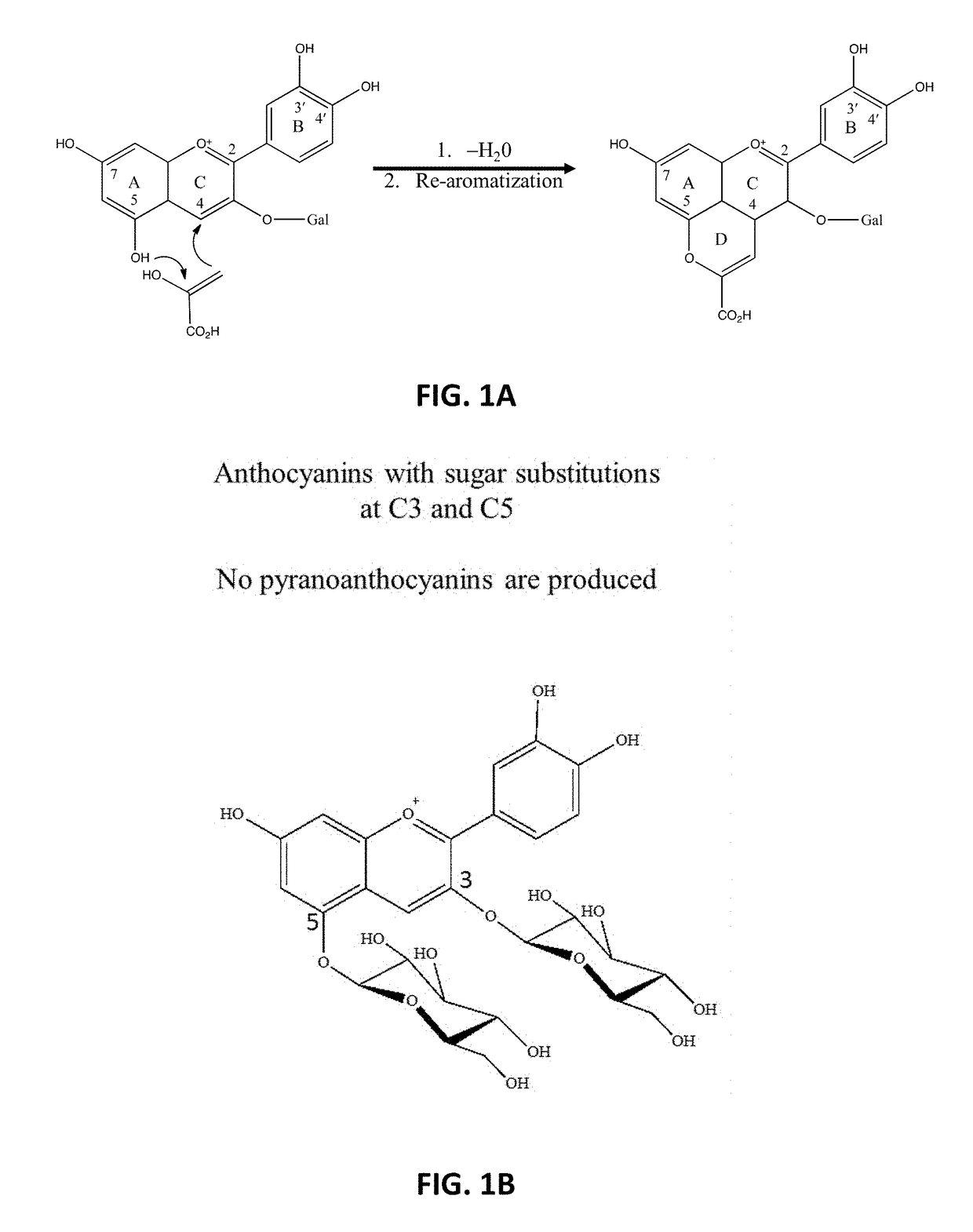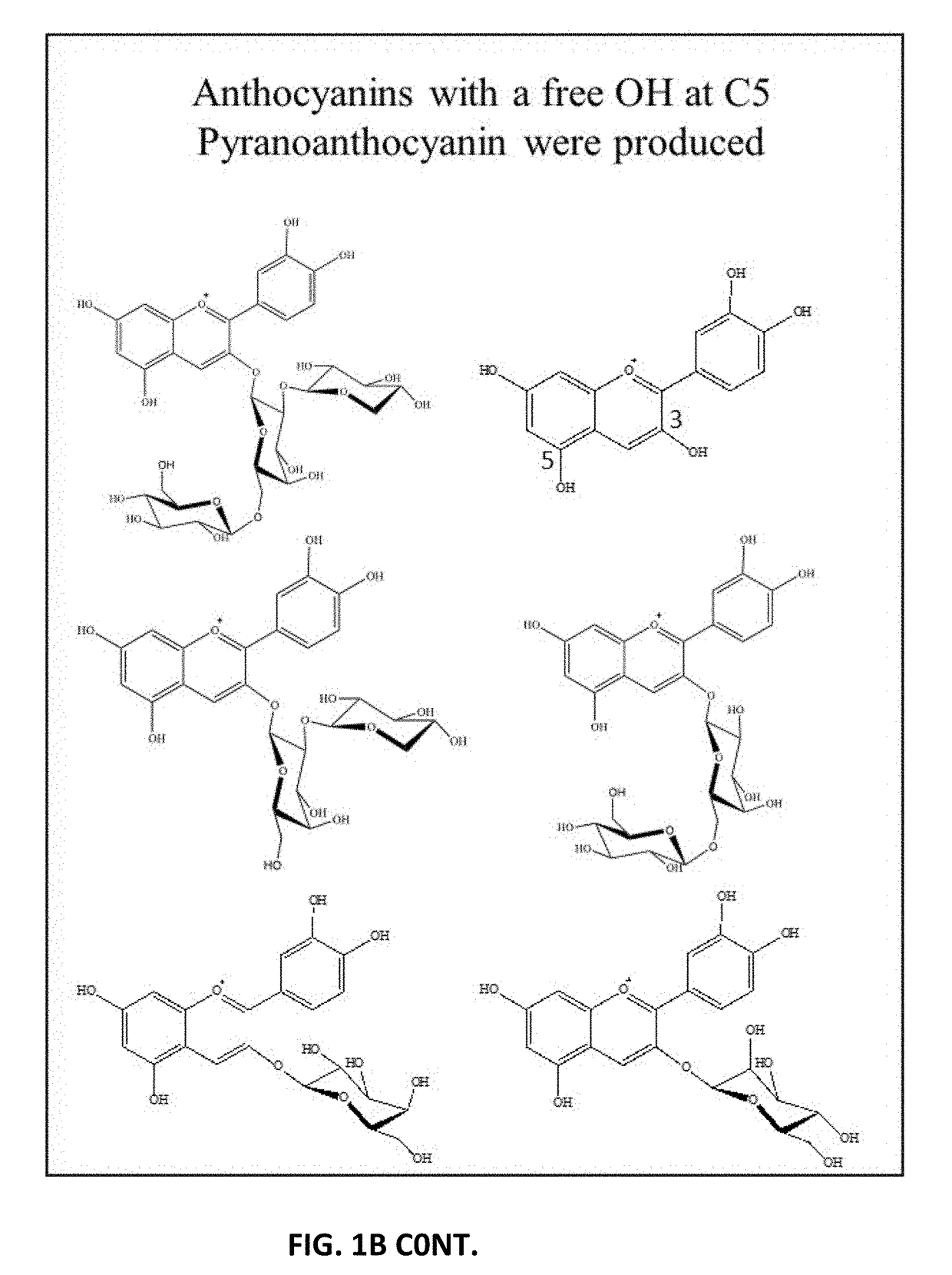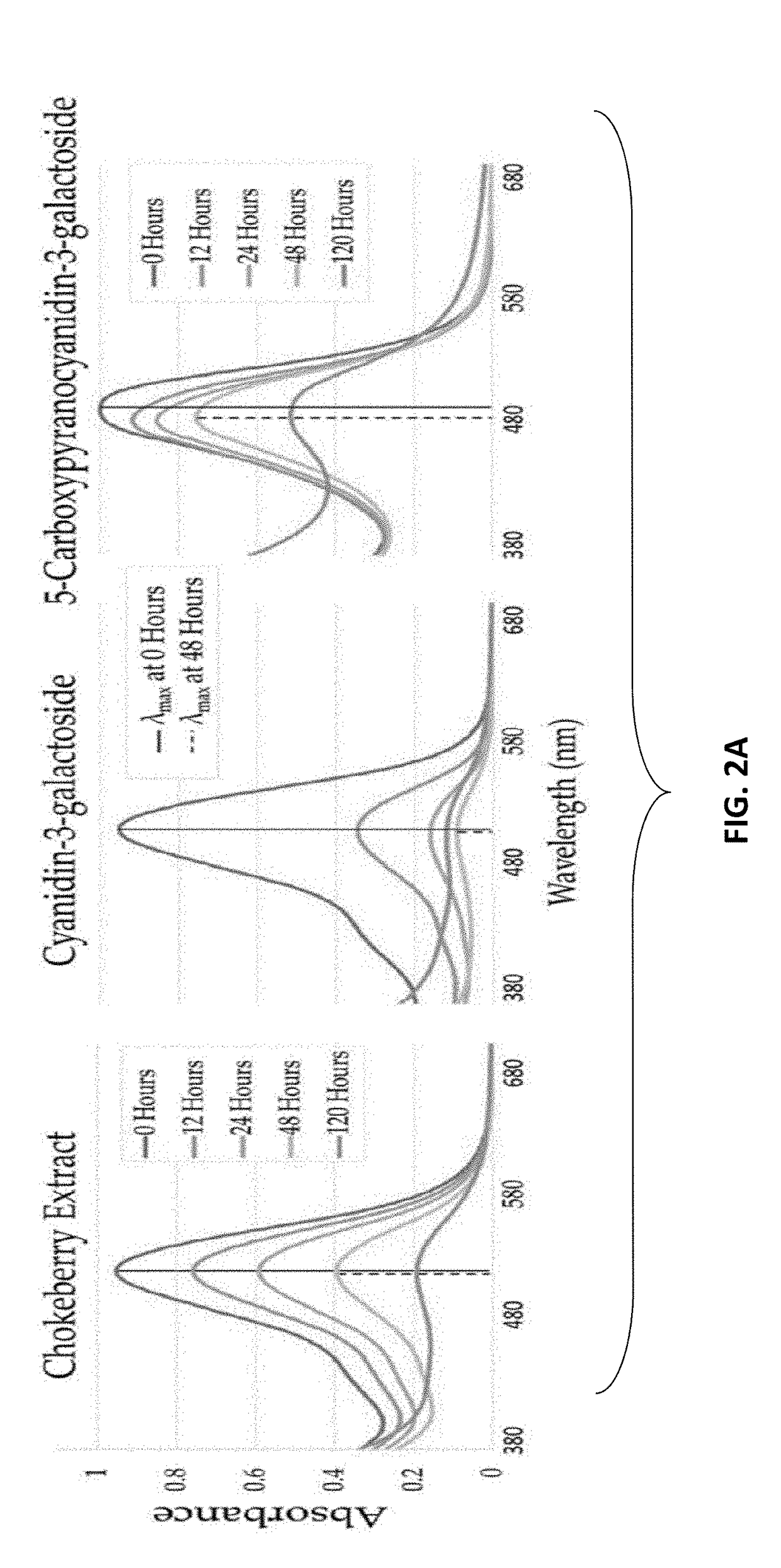Formation of Stable Pyranoanthocyanins, and Uses Thereof as Sources of Natural Color
a technology of pyranoanthocyanins and stable pyranoanthocyanins, which is applied in the field of stable pyranoanthocyanins and uses thereof as natural color sources, can solve the problems of loss of color, limited application of acn-based colorants, and major hurdles for food industry to use acn-based colorants, so as to achieve less bleaching and better preserve color expression
- Summary
- Abstract
- Description
- Claims
- Application Information
AI Technical Summary
Benefits of technology
Problems solved by technology
Method used
Image
Examples
examples
[0094]Certain embodiments of the present invention are defined in the Examples herein. It should be understood that these Examples, while indicating preferred embodiments of the invention, are given by way of illustration only. From the above discussion and these Examples, one skilled in the art can ascertain the essential characteristics of this invention, and without departing from the spirit and scope thereof, can make various changes and modifications of the invention to adapt it to various usages and conditions.
example i
on of Ascorbic Acid with Anthocyanins and Pyranoanthocyanins
[0095]Materials
[0096]Powdered chokeberry fruit was provided by Artemis Inc. (Fort Wayne, Ind., U.S.). Lab grade pyruvic acid used for the synthesis of pyranoanthocyanins was purchased from Sigma Aldrich (St. Louis, Mo., U.S.). USP grade 3% hydrogen peroxide was manufactured by Kroger (Cincinnati, Ohio, U.S.). Analytical grade ascorbic acid (99% L-ascorbic acid) was purchased from Sigma Aldrich (St. Louis, Mo., U.S.). HPLC grade acetonitrile and water were obtained from Fisher Scientific (Hampton, N.H., U.S.), and HPLC grade formic acid was obtained from Sigma Aldrich (St. Louis, Mo., U.S.).
[0097]Anthocyanin Semi-Purification (SPE)
[0098]Chokeberry powder was mixed with water acidified with 0.01% HCl prior to purification. The solution was loaded onto a Waters Sep-pak C18 cartridge for solid phase extraction (SPE). The column was then washed with acidified water (0.01% HCl) to remove of sugars and acids then followed with eth...
example ii
l
[0164]Anthocyanins fade rapidly in the presence of ascorbic acid, resulting in decoloration or bleaching. In response to ascorbic acid, pyranoanthocyanins exhibit greater resistance to bleaching. This is due to the formation of degradation compounds forming between the pyranoanthocyanin and ascorbic acid, resulting in compounds containing a chromophore like the pyranoanthocyanin it formed from.
[0165]FIG. 6 shows the evolution of a model juice over 1 day with 1000 mg / L ascorbic acid (2-4× typical commercial levels), revealing the formation of these new compounds. The newly-formed compounds eluted earlier than the original isolated structure. In addition, their λmax was lower than the original pyranoanthocyanin (478, 486 nm for new compounds versus 503 nm for the original pyranoanthocyanin.
[0166]FIG. 7 is a flow chart showing one example of a pyranoanthocyanin synthesis.
[0167]FIG. 8 is a flow chart showing one example of a process for juice preparation.
PUM
| Property | Measurement | Unit |
|---|---|---|
| pH | aaaaa | aaaaa |
| wavelengths | aaaaa | aaaaa |
| wavelengths | aaaaa | aaaaa |
Abstract
Description
Claims
Application Information
 Login to View More
Login to View More - R&D
- Intellectual Property
- Life Sciences
- Materials
- Tech Scout
- Unparalleled Data Quality
- Higher Quality Content
- 60% Fewer Hallucinations
Browse by: Latest US Patents, China's latest patents, Technical Efficacy Thesaurus, Application Domain, Technology Topic, Popular Technical Reports.
© 2025 PatSnap. All rights reserved.Legal|Privacy policy|Modern Slavery Act Transparency Statement|Sitemap|About US| Contact US: help@patsnap.com



